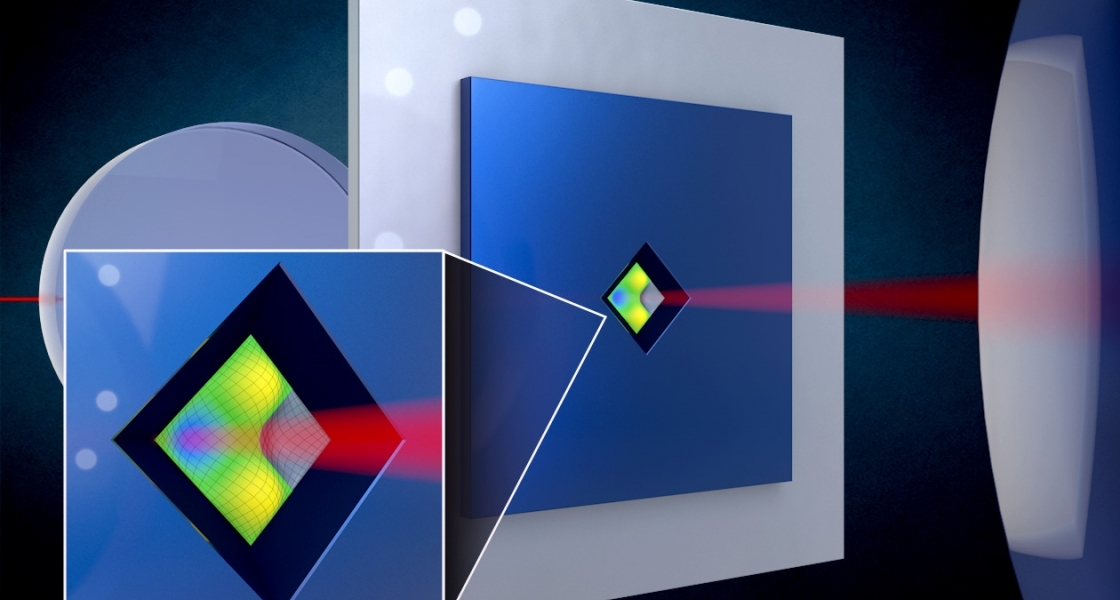Quantum computers are set to revolutionize society. With their expansive power and speed, quantum computers could reduce today’s impossibly complex problems, like artificial intelligence and weather forecasts, to mere algorithms.
But as revolutionary as the quantum computer will be, its promises will be stifled without the right connections. Peter Burns, a JILA graduate student in the Lehnert/Regal lab, likens this stifle to a world without Wi-Fi.
“The regular computer was developed 70 years ago, and it took up an entire lab and could barely do basic math,” said Burns. “It wasn’t until the 80’s that people had the idea to connect multiple computers together, and from that we got the internet.”
Burns is part of a JILA research team hoping to jumpstart the “quantum internet,” or the ability to network quantum computers. These networks would use the uniquely quantum property of entanglement to transfer inherently fragile quantum information between computers. Currently, the development of quantum networks is plagued by noise, but the JILA team recently implemented a new protocol which uses strategic measurements to reduce this impediment.
Fragile Information
Just as it is difficult to build a quantum computer, it’s also difficult to build a quantum network. This difficultly arises from the inherent fragility of quantum information. Even the smallest interference from the outside world, like a warm touch or an observing glance, can collapse quantum properties.
This is why most quantum-computer prototypes are kept inside dilution refrigerators, which are the quantum equivalent of an isolation chamber. Sheltered from the outside world, and ultimately from each other, these computers cannot pass information, “unless you are going to make a really, really big dilution refrigerator,” joked Burns. Instead, researchers are working to translate quantum information into a portable form.
While in a computer, quantum information is stored in microwave signals, which are easy to process, but terrible at traveling. To travel long distances, optical signals are the better carrier. JILA researchers therefore invented a quantum drum to translate quantum information between microwave and optical signals.
The Quantum Drum
Measuring only half a millimeter wide on either side, the drum is comparably sized to a grain of salt. The drumhead, however, is only a ten-thousandth of a millimeter (100 nanometers) thick, which is thinner than most bacteria and viruses. When the drum is excited by either optical or microwave frequencies, “it vibrates at a fundamental frequency,” explained Burns.
This fundamental frequency is the common language the drum uses to translate optical and microwave signals. It does this with the help of “carrier tones”, or additional microwave and optical frequencies which, when contrasted to the signal frequency, differ by the drum’s vibrational frequency. Ultimately, the process is like that of a radio. “There’s one frequency, or carrier tone, that you tune your radio to, and then the actual information [e.g. music or talk radio] is a frequency modulation [FM] on that,” explained Burns.
The drum has successfully translated microwave signals into optical, and optical signals into microwave, with nearly 50% efficiency. But translating actual quantum signals is currently impeded by noise, said Burns.
Noise on the Radio
This noise presents itself as extra photons, which are erroneous packets of microwave and optical energies that wash out the signal photons. These extra photons are produced by the drum itself, as heat and other external energies whisper through the quantum translator. “The problem is, all those extra photons don’t carry any of the information, so you lose your signal in the noise,” said Burns.
Originally, the quantum drum produced nearly 100 extra photons for every translated signal photon. But soon the team discovered that extra photons emerged simultaneously in the optical and microwave signals, like a game of telephone where the malefactor not only throws in extra words, but whispers their misdoings back down the line. By measuring both the microwave and optical signals, the team could identify and remove 3 of every 5 extra photons, thereby significantly reducing the added noise.
While current drum prototypes produce around 10 to 40 extra photons, the ultimate goal is to reduce this number to less than one, said Burns. Realizing this goal will mean that at least some translations have zero extra photons, and the device is ready to translate quantum signals. According to Burns, the team is “very close,” citing only a few minor improvements. This is great news for those not wanting to choose between quantum computers and internet memes.
This work was published in Nature Physics in July of 2018. In addition to JILA graduate student Peter Burns, authors of this work include recent JILA Postdocs Andrew Higginbotham and Nir Kampel, current JILA postdoc Benjamin Brubaker, recent JILA graduate Robert Peterson, current JILA graduate student Maxwell Urmey, and JILA Fellows Graeme Smith, Konrad Lehnert, and Cindy Regal.
Written by Catherine Klauss




